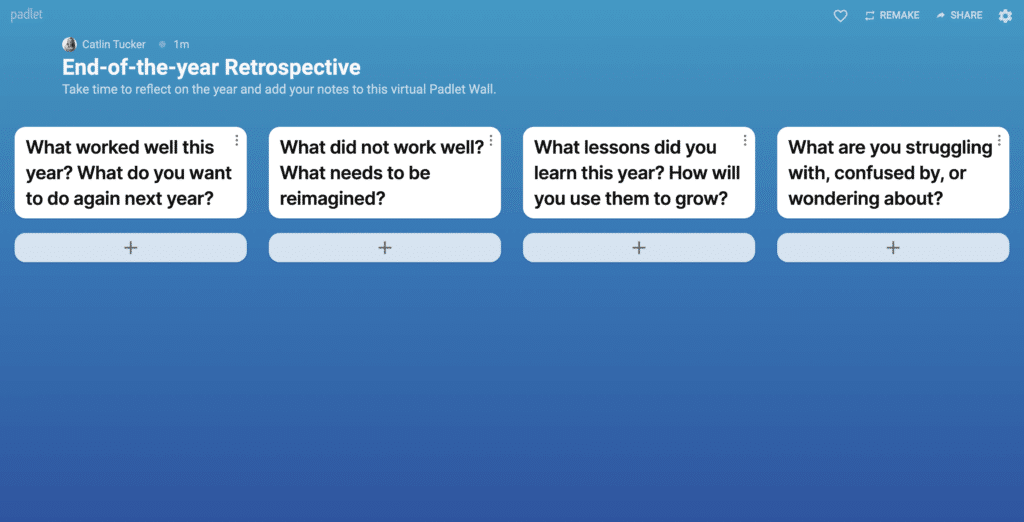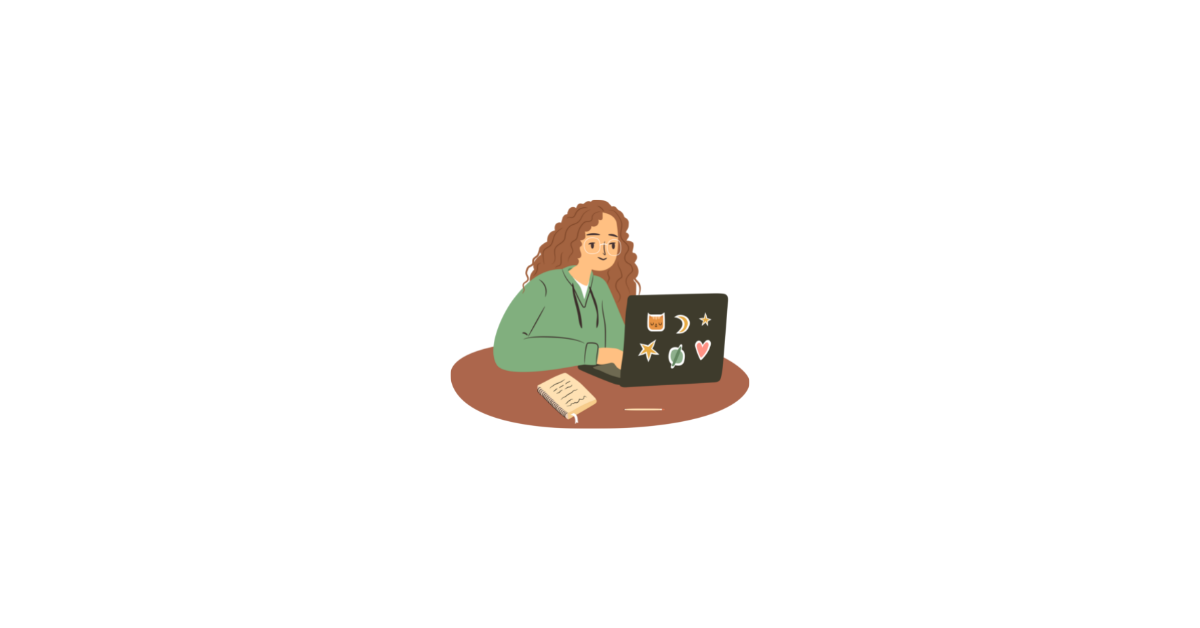In my last blog post, I said self-awareness is a foundational social-emotional learning skill. If students are unable to identify their emotions, thoughts, and values and recognize how they influence their behaviors, it will be challenging for them to develop the other SEL core competencies. As students understand themselves on a deeper level, they’re more likely to be successful in developing their self-management skills.
What is self-management?
Self-management is the ability to regulate one’s feelings, thoughts, and behaviors effectively in various situations to achieve a particular outcome, goal, or aspiration. Self-management includes the ability to:
- Delay gratification, postponing an immediate reward in favor of a greater reward that comes later.
- Manage one’s stress in a healthy way.
- Be motivated to pursue challenging tasks.
- Enjoy the agency to make meaningful choices in order to accomplish goals (CASEL).
To help cultivate self-management in classrooms, educators should consider the following questions:
- What strategies can I provide to help students manage their emotions and reflect on the impact of their actions?
- How can I support students in cultivating stress management strategies?
- How can a regular practice of goal setting impact student motivation over time?
- Which planning and organizational strategies will support students in taking ownership over their learning?
Benefits of Developing Self-management
A large-scale study found that “self-management is a better predictor of student learning than are other measures of socioemotional skills” (Claro & Loeb, 2019). Research suggests that when students are better able to manage themselves and their behaviors, this skill positively impacts:
- Graduation rates (as compared to using standardized test data).
- Academic achievement.
- Self-efficacy, or confidence in one’s ability to complete work or navigate complex tasks.
- The quality of a student’s relationships with other members of the learning community.
- Classroom management (Claro & Loeb, 2019; Duckworth & Carlson, 2013; Jones & Jacob, 2014).
So, how do we help students develop the ability to regulate their thoughts, feelings, and behaviors?
5 Strategies Designed to Help Students Develop Self-management
Strategy #1: Setting Academic, Behavioral, and Personal Goals
Setting goals is key to helping students develop their metacognitive muscles to better understand themselves as people and as learners. A regular goal-setting routine encourages students to identify academic, behavior, and personal goals they want to work toward. It asks them to think about what is required in terms of their actions and behaviors to make progress toward their goals.
As much as teachers value goal setting, it can be challenging to make time for this routine. Depending on the age of the students, teachers may want to begin each week by asking students to set a single goal they want to work toward. Teachers working with older students may want them to set a few goals to focus on for the length of a grading period or unit of study.
Regardless of your approach to facilitating goal setting, it’s important to:
- Provide students with a consistent format for thinking about and recording their goals.
- Model this process with a think-aloud so students understand how to set realistic goals for themselves.
- Dedicate class time to goal setting to communicate the value of this routine.
- Use the students’ goals during conferencing to ground your conversation about their progress.
Strategy #2: Prioritizing Tasks with To-do Lists
As adults, many of us use to-do lists on paper, online with tools (like Google Keep), or an app on our phones to keep track of everything we need to get done in a day or week. A to-do list helps us prioritize the most important tasks to ensure we are spending our time and energy in places that will have the biggest impact. A to-do list can also function to ease anxiety simply by naming what needs to get done. Checking items off a to-do list creates a sense of accomplishment, motivating us to continue working through the list.
Students juggling multiple classes and myriad assignments with varying due dates will benefit from making to-do lists; however, they may not have any practice with this routine. Teachers can support students by dedicating class time to the creation of to-do lists and modeling how to prioritize items on their to-do lists. Similar to the goal-setting routine, it’s best to provide students with options for how to record their lists (e.g., online or offline) and give students class time to practice. This can happen as a welcome task routine or an end-of-class activity.
Strategy #3: Reflecting on Missteps
Missteps and mistakes are a part of the learning process. Students need opportunities to reflect on their choices and behavior to understand how they impact other members of the learning community. Simply reprimanding students is unlikely to help them develop their self-management skills. Instead, pairing a consequence with a reflective practice can help students to identify why they behaved in a certain way and how that behavior may have impacted other people.
We can ask students to complete a safe space reflection form when students violate a class agreement or expectation for behavior to encourage them to think more deeply about the incident. Once they’ve had an opportunity to reflect, we can meet with them to discuss what happened, why it happened, and how the students might respond differently to a similar situation in the future.
Strategy #4: Conducting a Retrospective
A retrospective, or “look back,” is a strategy that encourages students to consider four questions.
- What worked well?
- What didn’t work?
- What lessons have I learned?
- What am I struggling with, confused by, or wondering about?
The goal of a retrospective is to encourage students to reflect on their work, so they can create an action plan to build on their successes and implement changes for improvement.

A retrospective can happen any time during the school year (e.g., end of a semester or unit) to encourage students to reflect on their experiences and make adjustments to improve their academic performance and behavior in class.
Strategy #5: Enjoying Agency with “Would You Rather” Choices
The ability to demonstrate personal and collective agency is another dimension of self-management. Students need to be able to make meaningful and appropriate choices about their learning experiences. However, many students spend their days in classrooms where they may not get to make any decisions about what they learn, how they learn, or what they create to demonstrate their learning. As a result, many students may be uncomfortable making decisions and benefit from practicing this skill.
In a mini-episode of my podcast, The Balance, I described a simple “would you rather” strategy I encourage teachers to use to build at least one meaningful choice into each lesson or learning experience. This simple strategy makes giving students agency more sustainable and manageable while helping students develop confidence in their ability to make meaningful decisions about their learning.
Instead of designing a choice board with six or nine options, which may feel overwhelming, teachers can provide students with one choice between two options during the learning experience. This requires less time to prepare while still giving students agency. It’s worth our time to prioritize student choice because it positively impacts self-management skills and improves retention, transfer performance, and motivation.
These routines and strategies do not require significant time, but they help students learn how to manage their feelings and behaviors to positively impact their academic success and the overall functioning of the learning community.
My next blog post will focus on the competency of responsible decision-making!






5 Responses
This series has been so helpful. Really looking forward to the next one. Thank you!
Wonderful! I’m thrilled to hear you are enjoying it. 😊
Catlin
Well-written post. The examples you give of the methods for implementing these principles in.the classroom are easy to understand and helpful. Thanks for sharing.
Thank you, Karen!
Dr. Tucker, I really enjoyed your blog. I found it informative, and it reassured my thinking about how I can help my students with self-management when I am a teacher. I like the idea of setting goals, because it will give the students something specific to think about and work towards. I also think that having students fill out a safe space reflection form is a great way to help students with self-management, and really seeing what their actions were and how they got there. It is very easy to tell someone what they did was wrong and end the conversation, but this does not help the students. Allowing the student to take the time see what happened step-by-step will help them to come up with better ways to do handle the situation if it was to reoccur.